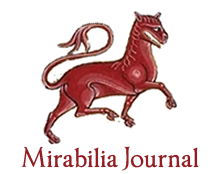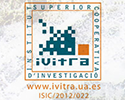The Cantigas de Santa Maria of King Afonso X (13th century). Cantiga 84: religious orders and aedificationes
Bárbara DANTAS
Original title: As Cantigas de Santa Maria do rei Afonso X (século XIII). Cantiga 84: as ordens religiosas e as aedificationes
Published in
Keywords: Cantigas de Santa María, Medieval Architecture, Medieval Literature, Miniature, Religious Orders.
This work aims to show the importance of medieval religious orders for the realization of architectural works in the medieval period. The main source of this study is not an architectural work in itself, but a codex. Both in images and texts, this book delights us with many references to architectural works. It is the Cantigas de Santa Maria of King Afonso X. A compendium of the 13th century formed by about 420 songs recorded in Galician-Portuguese through rhythmic verses. The songs are “illuminated” by hundreds of historical full-page illuminations that represent in images what the text says in words. Cantiga 84 is the driving force behind this brief survey of some buildings that marked the Middle Ages and still enchant the world.
The Cantigas of Santa Maria – a musical treasure of the reign of Afonso X, the wise man (1252-1284)
Lenora Pinto MENDES
Original title: As Cantigas de Santa Maria – um tesouro musical do reinado de Afonso X, o Sábio (1252-1284)
Published in Music in Middle Ages and Early Modernity
Keywords: Cantigas, Music, Poetry.
Produced in the alfonsine scriptorium, the Cantigas de Santa Maria constitute a true encyclopedia of medieval music. Inserted in the medieval European troubadour movement in its Marian aspect in which the Virgin Mary takes the place of the lady of the court. They survived in four richly illuminated manuscripts with the record of all their melodies on the staff of five lines and squares neums developed a little earlier by the master Guido D’Arezzo. Considered a treasure by the wise king, the books of the songs also possessed healing powers. Some cantigas record passages of the life of its royal author.
The Choir Books of the monastery of St. Benedict of Cátris: codicological analyses of an Antiphonarium
Antónia Fialho CONDE, Isabel Maria Botelho de Gusmão Dias Sarreira Cid da SILVA
Original title: Os Livros de Coro do mosteiro cisterciense de S. Bento de Cástris: análise codicológica de um Antifonário
Published in
Keywords: Ancient bookmaking, Ancient religious libraries, Antiphonarium, Cistercian feminine Monastery.
Study of an Antiphonarium (materials, structure, techniques, pagination, decorated alphabets, biding) trying to identify its main characteristics to be possible to connect it to other books of the same type (Choir Books) belonging to the ancient library of the Cistercian Monastery of S. Bento de Cástris of the city of Évora, Portugal.
The Circulation of the Legenda Aurea in Portugal: a case study on D. Fernando’s hagiography
Clínio de Oliveira AMARAL, João Guilherme Lisbôa RANGEL
Original title: A circulação da Legenda Aurea em Portugal: estudo de caso da hagiografia do D. Fernando
Published in Manifestations of the Ancient and Medieval World
Keywords: Circulation, Infante Santo, Legenda Aurea, Portugal.
The notion of mobility, at any point in history, is very wide. In order to comprehend it in the Middle Ages, we chose to analyze it through its circulation in written texts. Therefore, the objective of this article is to demonstrate the circulation of A Legenda Aurea in Portugal during the second half of the 15th century. In order to do so, we will present number of possible influences of this text on the Trautado da vida e feitos do muito vertuoso S.or. Infante D. Fernando, a hagiography written by the friar João Álvares in 1450 with the purpose of promoting the royal sanctity of the infant d. Fernando, known as Infante Santo since then.
The Cluny Unicorn from Sero te amavi
Silvia MAGNAVACCA
Original title: El unicornio de Cluny desde el Sero te amavi
Published in Monastic and Scholastic Philosophy in the Middle Ages
Keywords: Cluny, Sero te amavi, Unicorn.
The author tested a reflection on the role of sensuality in Augustinian thought about a work of art medieval tapestries “The Lady and the Unicorn” in the National Museum of the Middle Ages, in Cluny. To do this, first, remember the bill of the work, its dating and arrangement, noting also the main interpretations of which was the object. Secondly, on the basis of medieval symbolism, describes and analyzes each of the six tapestries that comprise, in which, according to the traditional interpretation, see represented the external senses, reserving for the end the enigmatic sixth tapestry, In third, it refers also to other parts of the Augustinian work, the book X of the Confessions, centered on Sero te amavi you to highlight some points of Augustine's thought, some underlined, and shows that they agree a variant in the traditional interpretation of these famous medieval tapestries. Finally, summarizes his conclusions, emphasizing the character of mere exercise proposed hermeneutic interpretation.
The Concept of Beauty in Medieval Nativities from England and Spain
Vicente CHACÓN-CARMONA
Published in Pleasure in the Middle Ages
Keywords: Beauty, Landscape, Music, Nativity, Religious drama, Shepherds.
Medieval nativity plays, in particular those dealing with the adoration of the shepherds, tend to depict two well distinct worlds, namely before and after the characters learn about the birth of the Messiah. English and Castilian playwrights depict the postlapsarian world prior to Jesus’s birth as a gloomy, barren place inhabited by rough ignorant creatures awaiting their redemption. Even if beauty is not staged as such in these plays, it is clear that the characters, due to their moral state, are unable to appreciate the aesthetics of their surroundings. It is the aim of this article to analyse and compare the strategies utilised by the authors in order to stimulate the characters and make beauty somehow apparent to the spectators both in the English and the Castilian traditions. Special attention is paid to the roles played by landscape, language, and music.
The Cordoba Mosque and the Alhambra of Granada: Founding Monument and Final Testimony of al-Andalus
Carmen Lícia PALAZZO
Original title: A mesquita de Córdoba e a Alhambra de Granada: o monumento fundador e o derradeiro testemunho de al-Andalus
Published in Medieval and Early Modern Iberian Peninsula Cultural History
Keywords: Alhambra of Granada, Great Mosque of Cordoba, Islamic Spain, Ornament in Islam.
This article analyses two of the most significant monuments in Islamic Spain: the Great Mosque in Cordoba and the Alhambra in Granada. Both are treated with regard to the political history of the region. The article stresses the role of Byzantine Christian artists in the decoration of the Mosque, as well as the relevance of decorative arts in both monuments, particularly the occurrence of Quranic mentions of luxury and ornament. It shows the importance, in the Alhambra, of the ensemble as an affirmation of the Nasrid Dynasty, by means of opulent decoration and the epigraphic poetry of Ibn Zamrak in the Fountain of Lions, declaring the genealogical roots of Muhammad V.
The Dialogue on the edge: the Librum disputationis Petri et Raimundi phantastici (1311)
Ricardo da COSTA
Original title: O Diálogo no limite: “A disputa entre Pedro e Ramon, o superfantástico” (1311)
Published in Medieval and Early Modern Iberian Peninsula Cultural History
Keywords: Disputatio, Medieval Art, Medieval Philosophy, Ramon Llull.
The purpose of this conference is to present the phylosophical debate between Pedro and Ramon Llull (Librum disputationis Petri et Raimundi phantastici), and analyze the limits of the medieval dialogue. Debate or conversion? We intend to discuss the parameters of medieval dialogue lulian, aspects that led our author to the most extreme fantasies of literary-philosophical dialogue: the dramatization of the conflict between ideals and realistic attitudes. In addition, we intend to do a iconographic analysis of one of the most famous artistic representations of Ramon Llull: “The rear of the army and relief of Mr. Ramon Llull of Majorca to destroy the tower of falsehood and ignorance”, seventh miniature from Breviculum (1325).
The Disdacalicon of Hugh of St. Victor – Rules of reading as norms of life
Maria Simone Marinho NOGUEIRA
Original title: O Didascálicon de Hugo de São Vítor – Regras de leitura enquanto normas de vida
Published in Monastic and Scholastic Philosophy in the Middle Ages
Keywords: Reading − Rules − Method − Moral Discipline..
In the present text looks to make a reflection about some established norms in the Didascalicon of Hugh of St. Victor, seeking to show that these overwhelm the idea of a simple normativity and, in turn, recover themselves as a true moral discipline.
The Dream of the Rood: the Byzantine Christian tradition in Anglo-Saxon England and the translation of the original poem into Portuguese
Elton O. S. MEDEIROS
Original title: O Sonho da Cruz: a tradição cristã bizantina na Inglaterra anglo-saxônica e a tradução do poema original ao português
Published in Senses and sensibilities in classical and medieval worlds
Keywords: Anglo-Saxon England, Christianity, Literature, Old English, Society.
One of the main symbols of the Christian tradition is the Holy Cross on which Christ was executed. However, unlike the conception of an instrument of torture, in the tradition that was developed, the Cross emerges as a symbol of victory, conquest over death, and the primary symbol of worship since the beginning of the Christian Era and during the Early Middle Ages. In the current article we intend to analyze the presence of the cult of the Cross in Anglo-Saxon England and its link with the Byzantine Christian tradition, mainly in the field of material culture and in the religious literature of the period. We also bring, in the end of this article, the complete translation of the poem The Dream of the Rood to Portuguese.






















































































